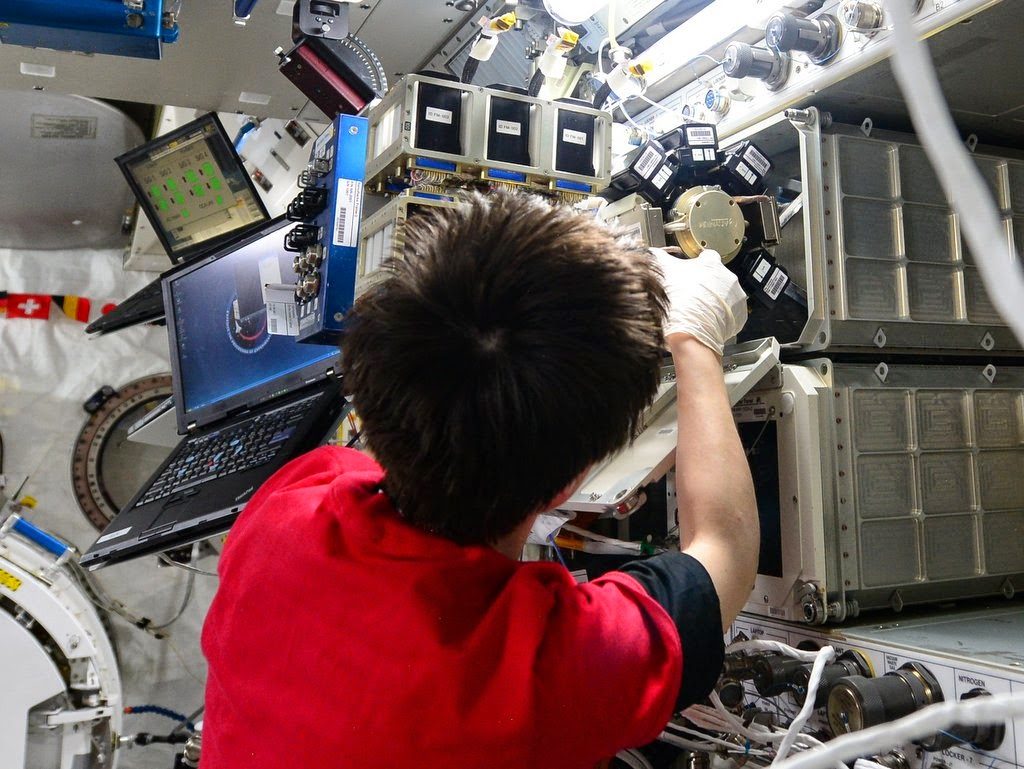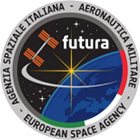L+53: Relative normality
Sunday
22:41
After the unplanned excitement of Wednesday, we woke up on Thursday morning to return to relative normality. Relative, because external cooling loop B was still shut down and unpressurized: due to the possible presence of gas bubbles after Wednesday’s events, the re-pressurization was a delicate process that would take the ground a few days to perform safely (Loop B is back online as of today, Sunday, as I’m writing this).
Ventilation was restored that morning, meaning that camping was over and we would be able to get back into our crew quarters, but cooling in Node 2 relies on Loop B, so it was going to be a bit warmer for a few nights (I think that I didn’t mind that part at all).
We also had no cooling in Node 3, where we have our treadmill T2, so we did our daily cardiovascular training in the Lab on CEVIS, our space bike. The other modules had cooling because it had been possible to transition them to “single-loop”, which entails connecting the two internal cooling loops and have them reject their combined heat load via external loop A, the one unaffected by the previous day’s events.
Because of the loop B situation, we were also did not have all the power channels available, causing some limitations, but nothing dramatic: in JEM and COL, for example, we only had half of the lights working and one of the two communication panels available. Nothing that would prevent the science activities to pick up the pace again and shortly after our morning planning conference with the ground, Butch, Terry and I were getting started with our respective experiments and the Space Station was a very busy laboratory again!
I had been tasked with setting up the Fruit Flies Lab. Yes, Dragon brought up some living company in form of about a hundred fruit flies or, to be formal, Drosophila Melanogaster. Actually, by now we probably have more: the point is to observe multiple generations and the short life span of fruit flies makes that possible. And since we share with those tiny fellows about 77% of the genes known to be involved in disease, they are a very interesting animal model!
The flies came up in cassettes, that you can see in the pictures. As I retrieved them one by one from the foam cutouts in their transfer boxes, it was good to see that they were alive and healthy: as far as I could tell, they were very happy astroflies in space!
Each fly cassette was matched to a special food changeout platform, with which I could insert fresh food without breaking containment, while simultaneously extracting larvae for preservation in our MELFI freezer. After the food changeout, I inserted each cassette in a specific location in one of the Nanorack facilities: as it’s commonly done in life science experiments, half of the cassette were stowed in a centrifuge to simulate normal Earth gravity, while the other half was stowed in a static location, hence in weightlessness.
Moreover, each cassette was paired with a small camera unit that monitors the flies behavior and provides an artificial day/night cycle.
It was a very gratifying work, looking forward to the next feeding cycle!
 Futura mission website (Italian): Avamposto42
avamposto42.esa.int
#SamLogbook #Futura42
(Trad IT) Traduzione in italiano a cura di +AstronautiCAST qui:
https://www.astronautinews.it/tag/logbook
(Trad FR) Traduction en français par +Anne Cpamoa ici:
https://spacetux.org/cpamoa/category/traductions/logbook-samantha
(Trad ES – Currently not updated) Tradducción en español aquí:
https://www.intervidia.com/category/bitacora
Futura mission website (Italian): Avamposto42
avamposto42.esa.int
#SamLogbook #Futura42
(Trad IT) Traduzione in italiano a cura di +AstronautiCAST qui:
https://www.astronautinews.it/tag/logbook
(Trad FR) Traduction en français par +Anne Cpamoa ici:
https://spacetux.org/cpamoa/category/traductions/logbook-samantha
(Trad ES – Currently not updated) Tradducción en español aquí:
https://www.intervidia.com/category/bitacora
 Futura mission website (Italian): Avamposto42
avamposto42.esa.int
#SamLogbook #Futura42
(Trad IT) Traduzione in italiano a cura di +AstronautiCAST qui:
https://www.astronautinews.it/tag/logbook
(Trad FR) Traduction en français par +Anne Cpamoa ici:
https://spacetux.org/cpamoa/category/traductions/logbook-samantha
(Trad ES – Currently not updated) Tradducción en español aquí:
https://www.intervidia.com/category/bitacora
Futura mission website (Italian): Avamposto42
avamposto42.esa.int
#SamLogbook #Futura42
(Trad IT) Traduzione in italiano a cura di +AstronautiCAST qui:
https://www.astronautinews.it/tag/logbook
(Trad FR) Traduction en français par +Anne Cpamoa ici:
https://spacetux.org/cpamoa/category/traductions/logbook-samantha
(Trad ES – Currently not updated) Tradducción en español aquí:
https://www.intervidia.com/category/bitacora18/01/2015





